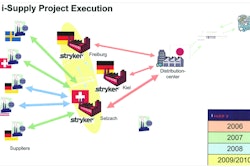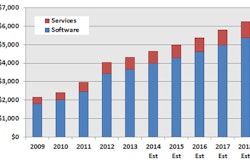
Recognize the value of better control over MRO
Be prepared for push back and non-compliance
Consider a third-party service provider for onsite storeroom management
Companies big and small have this one thing in common: They do not sufficiently control their maintenance, repair and operations (MRO) expenses. Consider that only 50 percent of the MRO parts requirements are found in the storeroom, amounting to 65-70 percent of the spend. The rest are purchased as spot buys, causing costly transactions and squirreled away sub-stocks. ("If I need three, I must buy 12 and put nine on a shelf somewhere.") Storeroom inventory generally turns less than once a year, and the request-to-fill rate is commonly less that 80 percent.
An analysis of transaction costs by Aberdeen shows that purchase order processing costs about $57 each for U.S. industrial organizations. MRO in manufacturing accounts for just 6-10 percent of the total spend but creates 80 percent of the company's paper processing costs. Each $1.0 million in MRO spend creates approximately 3,500 purchase order cycles (issues, receipts, POs, invoices) relating to MRO. At a cost of $57 each, the paper burden is $200,000, or 20 percent of each $1 million spent on MRO, plus the cost of dealing with hundreds of suppliers.
Imagine a big box home improvement store with a negative inventory turn, 50 percent of the customer's needs not there, stockouts occurring 20 percent of the time and the store making no markup on material sold. Such a store would not survive. And yet this is how most MRO storerooms operate: Storeroom requisitions to plant budget holders are issued at the purchase price without a fee (markup), and the operation loses money that is not recovered in the manufacturing process. The effect is a drain on the net profit of each facility.
Good intentions from corporate efforts to rein in MRO spending frequently fall short due to lack of plant compliance ("I can get it cheaper from my local guy"), the inherent flaws in the RFQ-market basket process (bad descriptions, brand questions, etc.), and a clouded understanding as to who owns the MRO responsibility.
Why do these conditions continue to exist? Do any of the following sound familiar:
- "MRO is just 8 percent of our spend, so why bother?"
- "I know MRO is a mess, but I'm just too busy to deal with it."
- "MRO is not my responsibility; let Engineering worry about it."
- "I do what I can; it is what it is."
- "I'm not sure what changes should be made or how to make them, and I don't want to have egg on my face."
- "The company's unwilling to invest dollars in MRO improvement."
And let's not forget the myriad of cross-functional conflicts that arise over MRO.
What to do? Approaches vary. Some organizations focus on consolidating indirect materials inventories in one central location per facility, using a computerized system to manage and control storeroom inventories, professionalizing storeroom staff, and asking suppliers to manage inventories of their parts and/or provide consigned inventories. The benefits of this approach can include greater efficiency, improved performance, increased supplier involvement and better control. But there are also disadvantages, including higher expenses for personnel and systems, and the need to monitor and manage employees and/or inventories from multiple suppliers as well as related information security issues. More important, this approach and similar strategies often fail because the put the burden of recovering MRO costs on the shoulders of plant personnel. Ultimately, costs do not get reduced because of the ingrained belief that the storeroom will always be an unrecoverable cost, and therefore plant management is unwilling to invest in controlling those costs.
An alternative approach is to look to a personalized third-party MRO scope of work that reflects world-class storeroom principles. Since your core competency is not stores operations, why continue to do it? Get out of the storeroom business and let the experts do it by bringing in a firm that specializes in onsite storeroom management. These firms understand how to implement effective indirect materials programs, they know the bumps along the way and how to avoid them, and they can bring systematic, time-tested strategies to the table. Often they can also bring supplier discounts because they are able to aggregate spend across multiple clients. And they must be able to achieve not only immediate-term results but long-term continuous improvement in order to retain their customer relationships.
Regardless of how you take on your MRO spend, the most important step is recognizing that you can make progress in reducing these costs. And the first requirement is your own willingness to take on this last bastion of uncontrolled expenses.
About the Author: George Krauter is a vice president at Storeroom Solutions in Radnor, Pa. He is the originator of the concept that became known as integrated supply and was co-founder of the first integrated supply company in the U.S., Industrial Systems Associates. More information on Storeroom Solutions at www.storeroomsolutions.com.

















